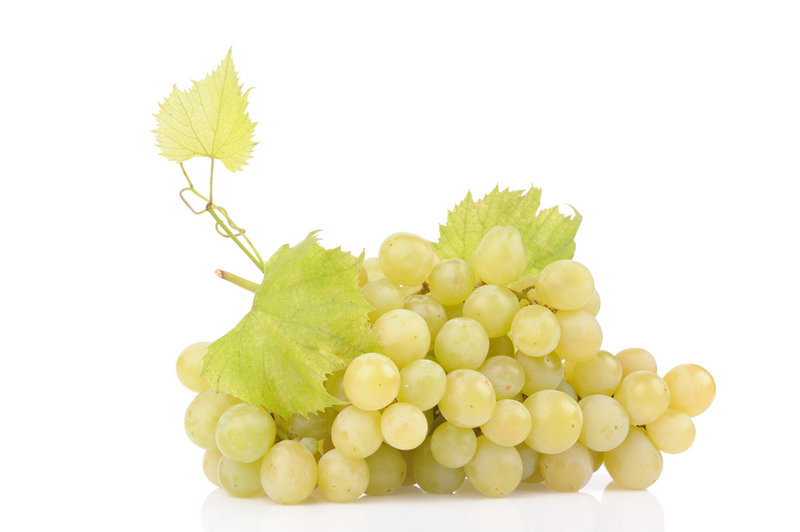It is possible to grow good grapes in Maine. They just need to be the correct grapes, planted in a good location and properly tended.
The Maine Landscape and Nursery Association held its summer twilight meeting earlier this month at Maine Coast Vineyards, run by Steve Melchiskey and his wife, Nanci Kahn, in Hurricane Valley, West Falmouth.
Melchiskey said he planted his first grapes in 1997 and now is producing enough wine to sell some at specialty wine shops in southern Maine. It took some work to get there.
“Maine has a very short growing season,” Melchiskey said, noting that it is much colder than The Finger Lakes, a successful wine-growing region in upstate New York. “By Oct. 4 we usually have had a hard frost, and we don’t have bud break (the first signs of growth in spring) until mid-May.” He said the temperature at his vineyard can hit 40 degrees below zero and it hits 20 below at some point almost every winter.
For that reason he has gone with new, hardier grape vines developed in places like the state universities in Minnesota and Wisconsin, and most of them are American-French hybrids. Wines he mentioned specifically include the red varieties Leon Millot and St. Croix, and the white variety St. Pepin, but he says he grows between 40 and 50 different varieties.
Location does matter. Melchiskey said that St. Croix grapes he grows on his property have a lighter flavor than the St. Croix grapes he gets from a North Yarmouth property.
During a tour of the vines, Melchiskey pointed out that his grapes are planted on a south-facing hill, well away from the trees at the side of the field. The south slope gives the grapes the maximum amount of sun and also provides good air circulation. He planted his first rows too close together, so he can barely get his tractor between the rows, but the later rows were planted farther apart.
He runs two rows of wires along each row of grapes, and trains the major vines along those wires. He removes all other branches, so that all the plant’s energy goes into the vines producing the grapes that remain.
With all of the rain early in the season, Melchiskey said, this has been a particularly difficult year for growing grapes. First, there was spotty germination at the start of the year. Then the grapes got powdery mildew in early July, something he doesn’t usually see until mid-August. He also has to deal with Japanese beetles. And a few of his grape varieties have root gall.
“I’m stupid, so I am organic,” Melchiskey joked, but noted that there are products he can use to deal with the problems.
He said he will treat the powdery mildew with Milstop, which works very well and is approved for use on organic farms.
“I have Japanese beetles, and I used to treat them with Neem Tree Oil,” he said, “but I stopped.”
He had an intern from Southern Maine Community College helping him with weeding and other chores, and she pointed out the white dots on the back of the beetles.
“She said they had a parasitic wasp and would die in a few days,” Melchiskey said. “The Japanese beetles don’t harm the grapes, just the leaves, and the vines have too many leaves, anyway. We can stand 5 to 10 percent leaf loss.”
The crown gall is not really a problem because grapes grow like weeds, and all he does is pull a new shoot from below the gall to above ground and let it grow.
While vineyards in California have only one stem coming from the ground, Melchiskey lets three grow — with two of them being insurance in case the vine gets damaged by cold weather.
Melchiskey has grass — or in some places vegetables grown by a CSA farmer who uses his property — growing between his rows of grapes, but he heavily mulches the soil around the grape vines themselves. He uses no other fertilizer.
“Using mulch has reduced my problems with all kinds of pests,” he said.
Melchiskey said he tells his grapes are ripe by the color of the seeds, not by the amount of sugar in the grapes. He said grapes grown in Maine will never produce enough sugars to make flavorful wine, and he has to add sugar — a process called chaptalization, common in some wine-growing regions throughout the world. “We call it Chateau Domino,” he said.
The white he served was off-dry but flavorful, in a style if not the flavor of German whites. The red had a light and flowery flavor.
Melchiskey said he has about 2 acres planted, and hopes to have 5 acres planted eventually, just for efficiency of operation — and so he can make a little money.
Tom Atwell has been writing the Maine Gardener column since 2004. He is a freelance writer gardening in Cape Elizabeth and can be contacted at 767-2297 or at:
tomatwell@me.com
Send questions/comments to the editors.



Success. Please wait for the page to reload. If the page does not reload within 5 seconds, please refresh the page.
Enter your email and password to access comments.
Hi, to comment on stories you must . This profile is in addition to your subscription and website login.
Already have a commenting profile? .
Invalid username/password.
Please check your email to confirm and complete your registration.
Only subscribers are eligible to post comments. Please subscribe or login first for digital access. Here’s why.
Use the form below to reset your password. When you've submitted your account email, we will send an email with a reset code.